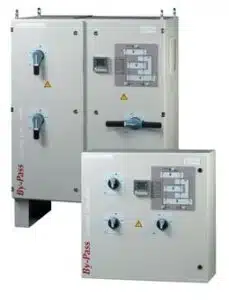Automatic Transfer Switch Installation: Ensuring Seamless Power Transitions
In the realm of electrical systems, reliability is paramount. Whether for residential, commercial, or industrial applications, the uninterrupted flow of electricity is crucial. Automatic Transfer Switches (ATS) play a pivotal role in ensuring continuity during power disruptions by seamlessly transferring power sources between the utility grid and backup generators. Proper installation of an ATS is essential to guaranteeing its effectiveness and safety. Transfer Switch Solutions

Understanding Automatic Transfer Switches
An Automatic Transfer Switch is a device that monitors the availability of electricity from the primary source (typically the utility grid) and automatically switches to a secondary power source (such as a backup generator) when it detects an outage. This automated process ensures that critical loads remain powered without interruption.
ATS units come in various sizes and configurations to accommodate different power capacities and application needs. They are equipped with sensors to detect voltage and frequency changes, triggering the switch to initiate the transfer to the backup power source.
Key Steps in ATS Installation
1. Assessment and Planning:
- Load Calculation: Determine the total electrical load that the ATS will manage. This includes essential equipment and appliances that must remain operational during power outages.
- Location Selection: Identify an appropriate location for installing the ATS. It should be easily accessible for maintenance yet protected from potential environmental hazards.
2. Electrical Preparation:
- Wiring: Ensure proper sizing and routing of electrical cables from the utility connection point to the ATS and from the ATS to the backup generator.
- Grounding: Establish effective grounding systems to protect against electrical faults and ensure safety.
3. Installation of ATS:
- Mounting: Securely mount the ATS on a stable surface, following manufacturer guidelines and local electrical codes.
- Connection: Carefully connect the input power cables from the utility and backup generator to the appropriate terminals on the ATS. Double-check all connections to prevent loose connections that could lead to inefficiencies or safety hazards.
- Control Wiring: Install control wiring for ATS operation, including interface with monitoring systems if applicable.
4. Testing and Commissioning:
- Functionality Test: Conduct thorough tests to ensure that the ATS operates correctly under simulated power outage conditions.
- Load Testing: Verify that the ATS can handle the anticipated electrical load without issues during transfer and operation.
- Safety Checks: Perform comprehensive safety checks to confirm compliance with electrical standards and regulations.
5. Documentation and Maintenance:
- Documentation: Keep detailed records of the installation process, including wiring diagrams, test results, and manufacturer's manuals.
- Scheduled Maintenance: Establish a maintenance schedule for periodic inspections and testing to maintain optimal performance of the ATS.
Automatic Transfer Switch installation demands precision, adherence to electrical codes, and a thorough understanding of electrical systems. By following proper procedures from assessment through to testing and maintenance, installers ensure that ATS units perform reliably when needed most. Whether safeguarding homes, businesses, or critical infrastructure, the installation of an ATS is a critical investment in continuity and reliability of electrical power.
Comments
Post a Comment